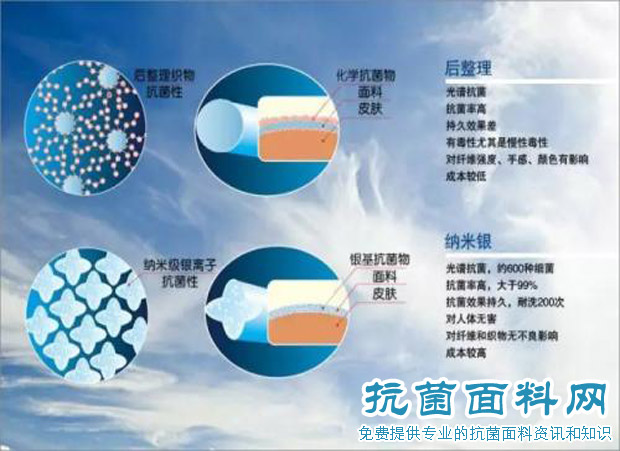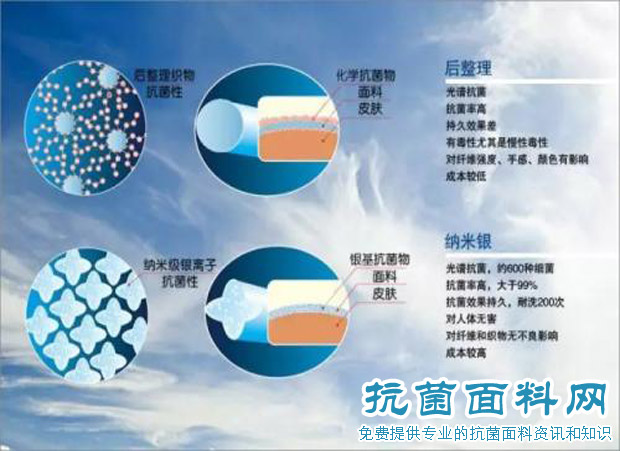As antibacterial finishing of protective functional textiles, there are various performance testing methods. Various qualitative and quantitative testing methods for antibacterial properties of textiles are introduced in detail; At the same time, the key factors affecting the test results of antibacterial properties of textiles are discussed.
5ff48055c546a.jpg
01
Selection of test strains
The tested strains include bacteria and fungi. Gram positive bacteria and gram negative bacteria are mainly used in bacteria, and mold and ringworm bacteria are mainly used in fungi.
The selection of bacteria must be scientific and representative in the evaluation of antibacterial properties of textile antibacterial fabrics.
Staphylococcus aureus is the most resistant pathogen among non spore forming bacteria, and can be the representative of gram-positive bacteria. Bacillus megaterium is a common pathogenic bacterium in spore bacteria; Bacillus subtilis is easy to form spores and has strong resistance, so it can be used as a representative of spores. Escherichia coli is widely distributed and has been used in various tests as a representative strain of common gram negative bacteria. Aspergillus flavus and Chaetomium globosum have been listed in the national standard of China (GB2423.16-81) as the specified fungi for mold prevention test. Other selected molds are common molds that erode textiles or polymer materials. Candida albicans is a common opportunistic pathogenic fungus of human skin and mucous membrane. It is sensitive to drugs and has the characteristics of fungi. The colony is similar to bacteria rather than bacteria and different from mold. Because it has a colony similar to bacteria, it is easy to count and observe, and is often used as a representative of fungi.
Therefore, in order to check whether the textile antibacterial fabric has broad-spectrum antibacterial effect, a more reasonable choice is to mix representative strains into mixed strains for testing according to a certain proportion. At present, the antibacterial properties of most antibacterial products are often only selected by Staphylococcus aureus, Escherichia coli and Candida albicans as representatives of gram-positive bacteria, gram-negative bacteria and fungi. However, it is far from enough to use these three bacteria to represent the antibacterial properties of fabrics.
In addition, since most fungi cannot count the number of colonies, the evaluation of the antifungal performance of textiles is mainly based on the observation of the growth of fungi on the samples after a certain period of time at a certain temperature and humidity after the samples are exposed to fungi. The evaluation of the degree of fungal growth is based on the British Standard BS6085-81.

5adf386c408fd.jpg
02
Testing method for antibacterial property of textiles
The testing methods for the properties of textile antibacterial fabrics mainly include qualitative testing methods, semi quantitative testing methods and quantitative testing methods.
1 Qualitative test method
Qualitative test methods mainly include American AATCC Test Method90 (Halo Test, also known as agar plate method), JISZ2911-1981 (anti microbial test method), AATCC-30 (evaluation of anti mildew and anti rot properties of textile materials) and GB/T 20944.1-2007 (evaluation of antibacterial properties of textiles Part 1: agar plate diffusion method). Qualitative test methods include inoculating test bacteria on the fabric and observing the growth of microorganisms on the fabric with naked eyes. It is based on the antibacterial activity of leaving the fiber and entering the culture dish. It is generally suitable for dissolution antibacterial finishing, but not for washing resistant antibacterial finishing. The advantages are low cost and fast speed. The disadvantages are that the antibacterial activity cannot be measured quantitatively and the results are not accurate enough.
(1) AATCC-90 test method
It is a rapid qualitative method for antibacterial efficacy screening. The principle is: inoculate the test bacteria on the agar medium, and then stick to the sample. After 24 hours of culture at 37 ℃, observe the growth of fungi and the halo size of the sterile area around the sample with a magnifying glass, and compare with the test of the control sample. This method can deal with a large number of samples at one time, with simple operation and short time. However, there are also some problems. For example, although it is stipulated to cultivate the test bacterial solution within a certain period of time, there is no clear stipulation on bacterial concentration. In addition, the width of the stop band represents the diffusion and antibacterial effect, which is meaningful for comparison with standard fabrics, but cannot be used as a quantitative evaluation of antibacterial activity.
(2) AATCC-90 spray method
AATCC-90 spray method is one of the improvements of AATCC-90 test method. It is to spray a certain amount of TNT reagent on the cultured sample and observe the growth of bacteria on the sample with naked eyes. Its coloring principle is that TNT reagent is reduced by succinate dehydrogenase of the test bacteria to produce insoluble red pigment and become red, so as to achieve the purpose of determining the antibacterial property. The advantage of this method is that no matter whether the sample has bacteriostatic ring, as long as there is bacterial growth on the plate, it will show red.

(3) AATCC-90 colorimetric method
The AATCC-90 colorimetric method is also an improvement of the AATCC-90 test method. It is to add a certain amount of TNT reagent to the bacterial washing solution on the cultured sample to make it colored. After 15 minutes, the absorbance at 525nm is measured with a spectrophotometer to calculate the number of live bacteria. However, the above two methods are not applicable to the test bacteria without succinate dehydrogenase.
(4) J ISZ2911 Antifungal test method
This method is an early achievement of the first research idea in mold detection. Its basic principle is: evenly spray a certain amount of mixed spore suspension on the sample and culture medium, cultivate for a certain period of time, regularly observe the mold growth of the sample, and evaluate the anti mold performance of the sample by grades according to the growth of mold.
(5) AATCC 30 test method
AATCC-30 is an evaluation of the anti mildew and anti rot properties of textile materials. The resistance to mold and decay of textile materials was determined to evaluate the effectiveness of fungicides on the antibacterial properties of textile materials. It is divided into soil burial method, agar plate method and humidity bottle method. The soil burial method is to measure the breaking strength of the sample (with a certain size) after it is buried in the mud for a certain time. This method uses the breaking strength of the sample lost after burial to characterize its mold resistance. Agar plate method is used to evaluate the resistance of fabrics to such bacteria. This method is to evenly drop a certain amount of aqueous solution with aspergillus spores dispersed on the agar plate containing the culture medium, then place the sample disc treated with non-ionic wetting agent on it, and evenly drop a certain amount of the above aqueous solution on the sample disc, place it at a certain temperature for a period of time, and finally observe the growth of mold on the sample. It is characterized by the mold area on the sample disc. The humidity bottle method is to hang the pretreated sample strip in a wide mouth bottle with a certain amount of water solution with a certain amount of bacterial spores and a certain amount of ventilation, and place it at a certain temperature for a period of time. This method is also characterized by the mold area on the sample strip.
(6) GB/T 20944.1-2007 Evaluation of Antibacterial Properties of Textiles Part 1: Agar Plate Diffusion Method
5ae1cf204bbf3.jpg
This standard is the latest qualitative test method for antibacterial performance of textiles in China. Two layers of agar medium are injected into the plate, the lower layer is sterile medium, the upper layer is inoculation medium, and the sample is placed on two layers of medium. After a certain period of culture, the antibacterial performance of the sample is qualitatively evaluated according to the degree of bacterial reproduction at the contact between the medium and the sample.
Contact: Jeanne yang(MISS)
Phone: 13912652341
E-mail: [email protected]
Add: Room A2216/A2217,Double-Star Building,No 567 New South Middle Road, KunShan City JiangSu Province ,China.